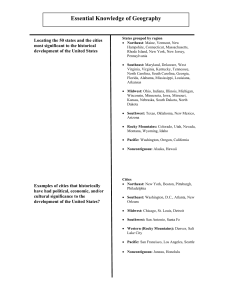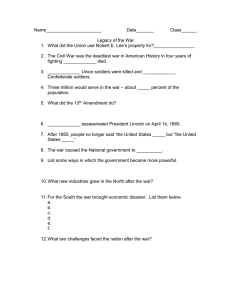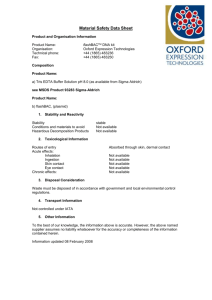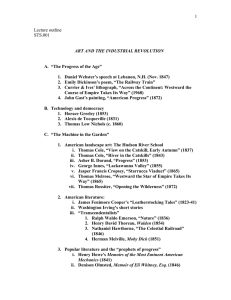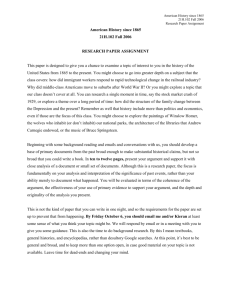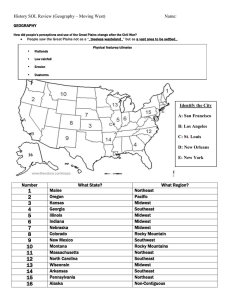Unit 1
advertisement
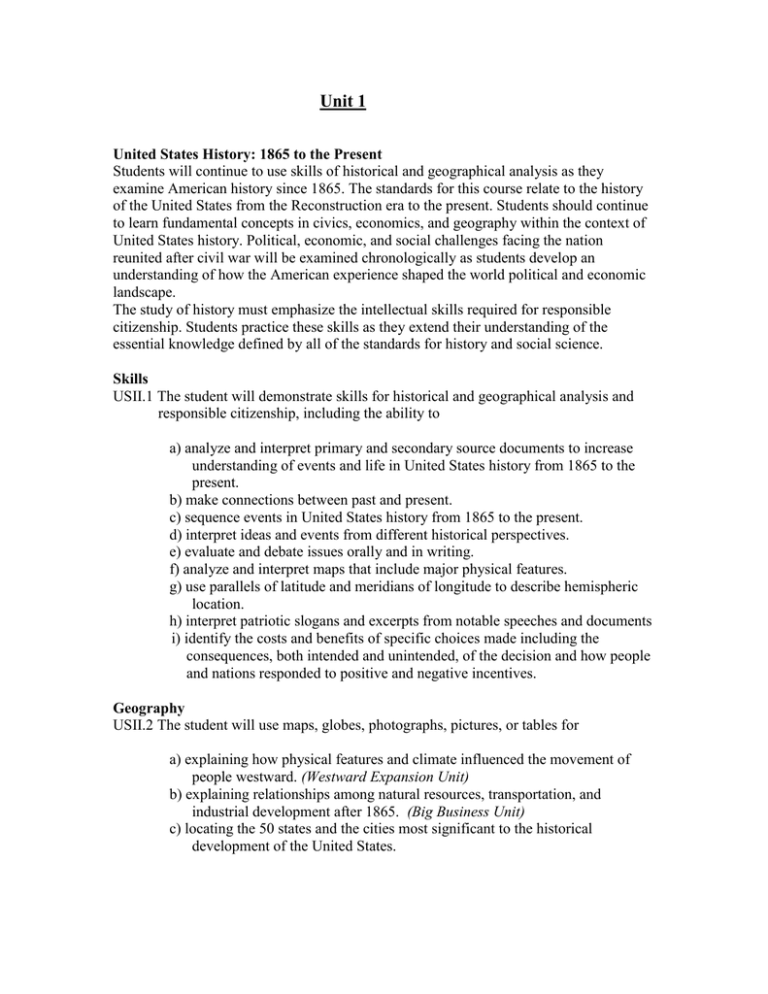
Unit 1 United States History: 1865 to the Present Students will continue to use skills of historical and geographical analysis as they examine American history since 1865. The standards for this course relate to the history of the United States from the Reconstruction era to the present. Students should continue to learn fundamental concepts in civics, economics, and geography within the context of United States history. Political, economic, and social challenges facing the nation reunited after civil war will be examined chronologically as students develop an understanding of how the American experience shaped the world political and economic landscape. The study of history must emphasize the intellectual skills required for responsible citizenship. Students practice these skills as they extend their understanding of the essential knowledge defined by all of the standards for history and social science. Skills USII.1 The student will demonstrate skills for historical and geographical analysis and responsible citizenship, including the ability to a) analyze and interpret primary and secondary source documents to increase understanding of events and life in United States history from 1865 to the present. b) make connections between past and present. c) sequence events in United States history from 1865 to the present. d) interpret ideas and events from different historical perspectives. e) evaluate and debate issues orally and in writing. f) analyze and interpret maps that include major physical features. g) use parallels of latitude and meridians of longitude to describe hemispheric location. h) interpret patriotic slogans and excerpts from notable speeches and documents i) identify the costs and benefits of specific choices made including the consequences, both intended and unintended, of the decision and how people and nations responded to positive and negative incentives. Geography USII.2 The student will use maps, globes, photographs, pictures, or tables for a) explaining how physical features and climate influenced the movement of people westward. (Westward Expansion Unit) b) explaining relationships among natural resources, transportation, and industrial development after 1865. (Big Business Unit) c) locating the 50 states and the cities most significant to the historical development of the United States. Key Terms: See Geography Notes What are the Regions of the United States? Intro Lesson Activity Map Project State of the States Project States grouped by region A state is an example of a political region. States may be grouped as part of different regions, depending upon the criteria used. Northeast: Maine, Vermont, New Hampshire, Connecticut, Massachusetts, Rhode Island, New York, New Jersey, Pennsylvania Cities: Cities serve as centers of trade and have political, economic, and cultural significance. Northeast: New York, Boston, Pittsburgh, Philadelphia Southeast: Maryland, Delaware, West Virginia, Virginia, Kentucky, Tennessee, North Carolina, South Carolina, Georgia, Florida, Alabama, Mississippi, Louisiana, Arkansas Cities Southeast:: Washington, D.C., Atlanta, New Orleans Midwest: Ohio, Indiana, Illinois, Michigan, Wisconsin, Minnesota, Iowa, Missouri,Kansas, Nebraska, South Dakota, North Dakota Cities Midwest: Chicago, St. Louis, Detroit Southwest: Texas, Oklahoma, New Mexico, Arizona Cities Southwest: San Antonio, Santa Fe Rocky Mountains: Colorado, Utah, Nevada, Montana, Wyoming, Idaho Cities Western (Rocky Mountains): Denver, Salt Lake City Pacific: Washington, Oregon, California Cities Pacific: San Francisco, Los Angeles, Seattle Noncontiguous: Alaska, Hawaii Cities Noncontiguous: Juneau, Honolulu
